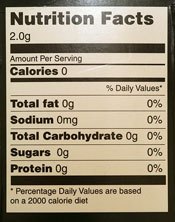Why A Pint Of Ice Cream Is Never Labeled "1 Serving"
“Serving size: 1 serving,” a bag of frozen ravioli I bought recently read. A pasta Zen koan. It wasn’t a single-serve bag, so could they give me the serving size in ounces? Number of ravioli? Just how arbitrary is this “serving size,” anyway? Slate’s Explainer explains: more so than you’d think.
The serving size that consumer nutrition comes from is based on something called the “reference amount customarily consumed,” or RACC. The problem is that this number can be fudged a bit, and often is.
For simplicity’s sake, the FDA encourages manufacturers to label a container as a single-serving “if the entire contents of the package can reasonably be consumed at a single-eating occasion”—even if it’s more than twice the RACC. For example, someone who buys a 20 oz. soda bottle is probably going to drink it all at once, even though the RACC is 8 fluid ounces. It’s more important for the food label to reflect actual consumption habits, the thinking goes, than to adhere strictly to the technical guidelines. Nevertheless, manufacturers insist on labeling soda bottles “2.5 servings.”
This Pint of Ben & Jerry’s Is Four Servings? [Slate]
Serving Size/Reference Amounts Customarily Consumed (RACCs) and Food Categories [FDA]
Want more consumer news? Visit our parent organization, Consumer Reports, for the latest on scams, recalls, and other consumer issues.


